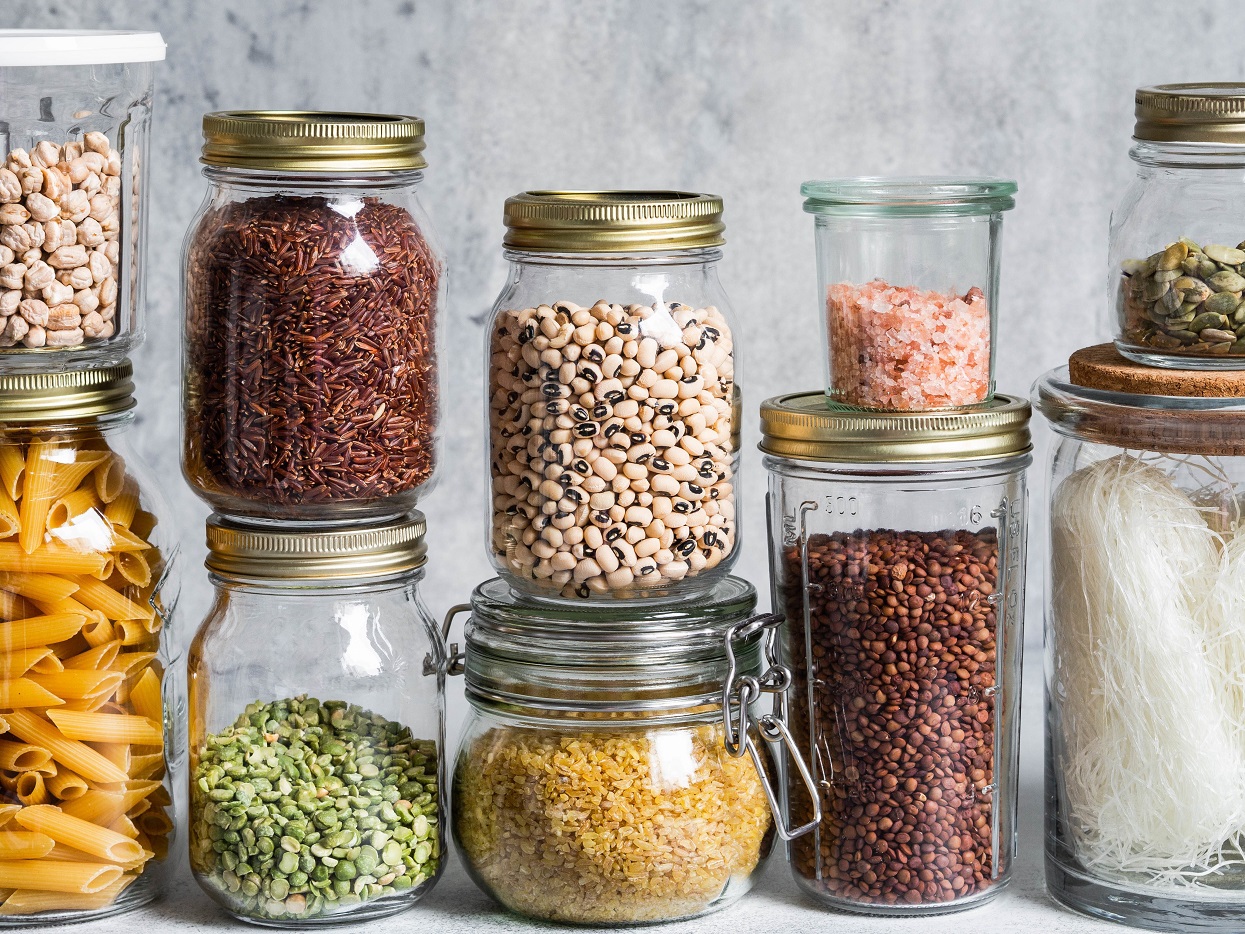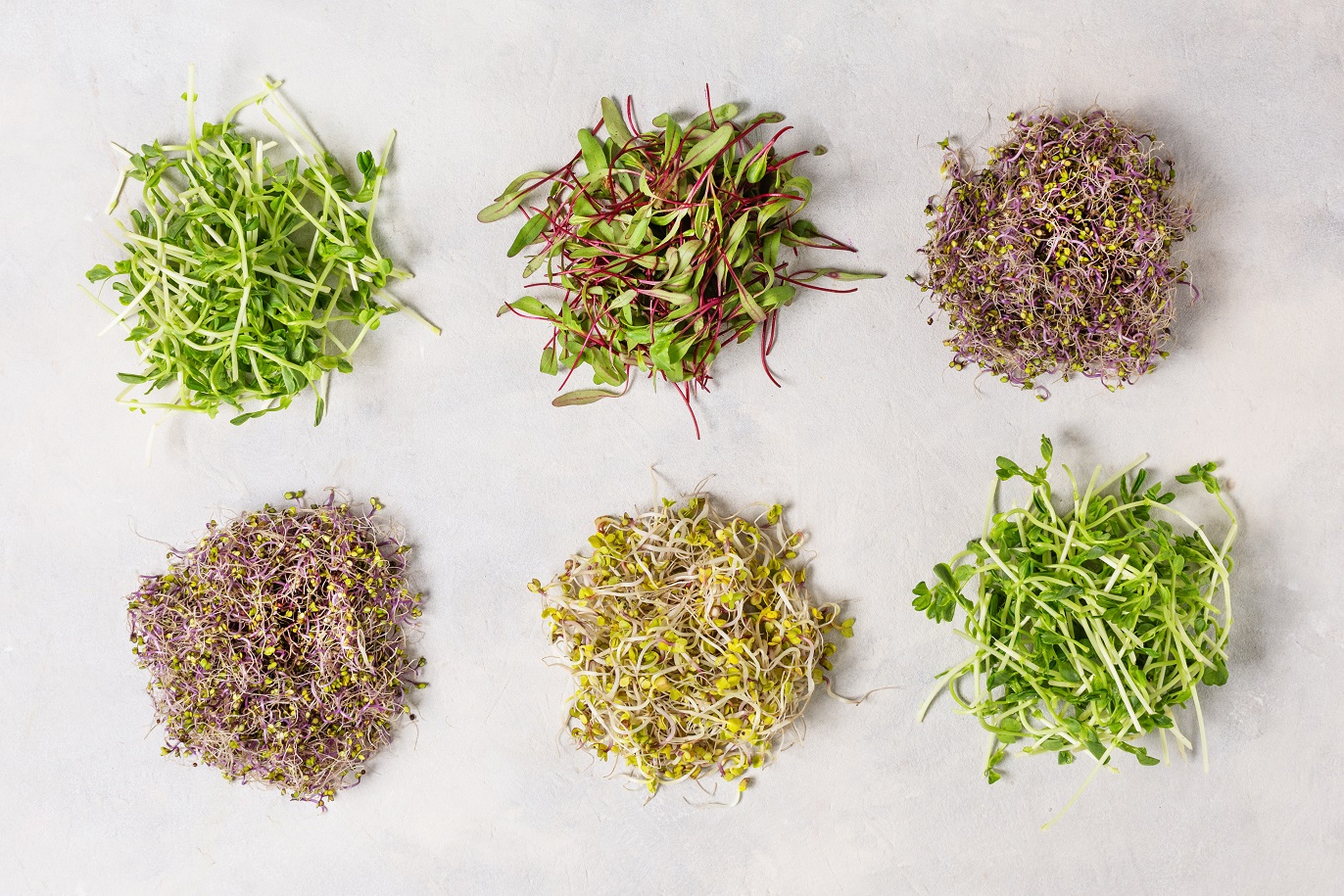
September feels like a good time to tidy up. One of the narrow larder shelves is home to a collection of tightly stoppered jars of dry goods — the beige stuff that forms the base of hearty, cheap-as-chips dinners: couscous and mograbia, polenta and bulgur, both fine and coarse. There are dried chickpeas and butter beans, lentils and haricot, rice-like orzo and lentils of diminishing sizes.
The small amounts in each jar are frustrating — obviously I am grateful, but also annoyed that there isn’t really enough of any one of them to make a single dish. Experience tells me that you mix such ingredients at your peril, as they all have differing times to cook. (A mixed lentil soup once ended up with chewy green ones in an orange lentil sludge.) So I decide to make little cakes from a mixture of bulgur wheat and lentils. The bulgur is the fine variety and ready in minutes; the lentils are the tiny pale orange ones that fall quickly into a delicious puree.
I tinker with the timings, making sure they are both tender enough to press into a batch of soft, rissole-like cakes. I fry them briefly on either side to give a crisp crust, then bake them in an easy, sweet-sour, tomato-olive sauce. The cupboard is now minus two jars of "bits".
Lentil and bulgur wheat cakes, tomato and olive sauce
Make sure you use fine bulgur for this. Don’t ignore the resting time in the fridge. It is important for the texture of the balls.
Serves 4
2 onions
4 Tbsp medium olive oil
2 cloves of garlic
1½ tsp yellow mustard seeds
1½ tsp cumin seeds
2 tsp curry powder
1 tsp ground turmeric
1 litre vegetable stock
250g small red lentils
150g bulgur wheat
15g fine parsley
10g coriander leaves
10 mint leaves
3 Tbsp vegetable oil for frying
For the sauce
600g tomatoes
2 Tbsp olive oil
2 tsp tomato puree
100g green olives, stoned
1 Tbsp pomegranate molasses
Method
Peel and finely chop the onions. Warm the olive oil in a deep pan with a lid, add the onions and let them cook for 15 minutes over a moderately high heat, until pale and translucent, stirring regularly. Peel and crush the garlic to a paste and stir into the onions. Add the yellow mustard seeds, cumin seeds, curry powder and ground turmeric and continue cooking for a further 3 or 4 minutes until toasty and sticking to the pan. Pour in the vegetable stock, stirring, then bring to the boil and add the lentils.
Lower the heat a little, partially cover with a lid and cook for 10 minutes (there will be very little water left), then stir in the bulgur wheat. Remove from the heat and season generously with salt and black pepper. Finely chop the herbs and stir into the lentils and bulgur wheat, then set aside, covered with the lid for 10 minutes.
Using your hands, roll the mixture into 12 large balls (you will get 12-14 balls at 75g-80g a piece), placing them on a tray as you go. Set aside for at least a couple of hours in the fridge.
To make the sauce, roughly chop the tomatoes and put them in a saucepan with the olive oil. Cook over a moderate heat, partially covered with a lid, for 10 minutes until the tomatoes start to collapse and release their juices. Stir in the tomato puree. Roughly chop the olives. Crush the tomatoes with a fork, then stir in the olives, salt and a little pepper and the molasses. Continue cooking for 5 minutes, then transfer to a large baking dish. Heat the oven to 200°C. Warm a thin pool of vegetable oil (about 3 tablespoons) in a shallow pan over a moderate heat, then fry the balls for about 4 minutes on each side, watching them carefully, until golden, then transfer to the baking dish, cover and place in the oven for 30 minutes.
 Spring greens, beanshoots and lime
Spring greens, beanshoots and lime

This is a recipe that can be almost endlessly adapted to suit what greens are in season. I made a version with gai lan the other day, and used roasted cashews in place of the peanuts. There is a little prep to do — crushing garlic and chopping spring onions and ginger, shredding spring greens and washing beanshoots — but the cooking is all done in a minute or two. You could vegan-ise the recipe by using a vegan substitute for the fish sauce.
Serves 2
3 cloves of garlic
2 spring onions
50g piece of fresh ginger
2 hot red chillies
100g sprouted beanshoots
100g mung beans
4 tbsp roasted peanuts
250g spring greens
3 Tbsp groundnut or vegetable oil, plus a
little extra
2 Tbsp fish sauce
2 tsp caster sugar
3 Tbsp lime juice
handful of Thai basil leaves
handful of coriander leaves
Method
Peel the garlic and mash to a paste. I do this using a pestle and mortar with a pinch of sea salt. Discard the root and the very dark green tips of the spring onions, then finely slice. Peel and thinly shred the ginger into matchsticks. Finely chop the red chillies. Wash the beanshoots and sprouted mung beans and shake them dry in a salad spinner or colander. Roughly chop the peanuts.
Wash the spring greens. Lay the leaves on top of one another and roll tightly. Then slice into finger-thick strips, like pappardelle.
Heat the oil in a wok. When it is hot, add the garlic, spring onions and ginger, and fry, moving them quickly round the pan for a minute or two, then add the chillies. Fry for another minute or so, until very lightly coloured, then remove everything from the pan with a draining spoon or wire strainer.
Add a little more oil to the pan and, when it is hot, add the beanshoots and mung beans quickly followed by the shredded greens. Add the peanuts, fish sauce and caster sugar, then return the aromatics to the pan. Keep everything moving around the pan, stirring and frying, then finish with the lime juice and Thai basil and, if you wish, coriander leaves. — The Observer












